Updated microservice architecture presentations
microservicesio updatesContact me for information about consulting and training at your company.
The MEAP for Microservices Patterns 2nd edition is now available
One of my 2023 goals is to refresh Microservices.IO. Today, I updated the page listing the most important presentations that I’ve given on the microservice architecture. Here are a few of my favorites.
Cubes, Hexagons, Triangles, and More: Understanding Microservices
This presentation, which I gave at JFokus 2020, is one of my favorites. It uses a series of shapes as visual metaphors that describe key aspects of the microservice architecture.
There is no such thing as a microservice!
This presentation defines the microservice architecture. It particular explains how a microservice does not (and cannot) exist in isolation. The microservice architecture is a collection of collaborating (micro)services.
QCONSF 2022: Dark Energy, Dark Matter and the Microservices Patterns?!
In this presentation, I describe how dark energy and dark matter are excellent metaphors for the competing forces (a.k.a. concerns) that must be resolved by the microservices pattern language. It covers how to use the dark energy and dark matter forces as guide when designing services and operations.
QConPlus 2021: Takeout burritos and minimizing design-time coupling in a microservice architecture
I gave this presentation at QConplus 2021. It illustrates how to design loosely coupled services using the problem of ordering burritos.
Decompose your monolith: Six principles for refactoring a monolith to microservices
This presentation describes six principles for refactoring a monolith to a microservice architecture.
Considering Migrating a Monolith to Microservices? A Dark Energy, Dark Matter Perspective
This presentation describes how to use the dark energy and dark matter forces to decide whether to migrate to the microservice architecture.
Learn more
- Take a look at the page listing the most important presentations
- Contact me about consulting and training
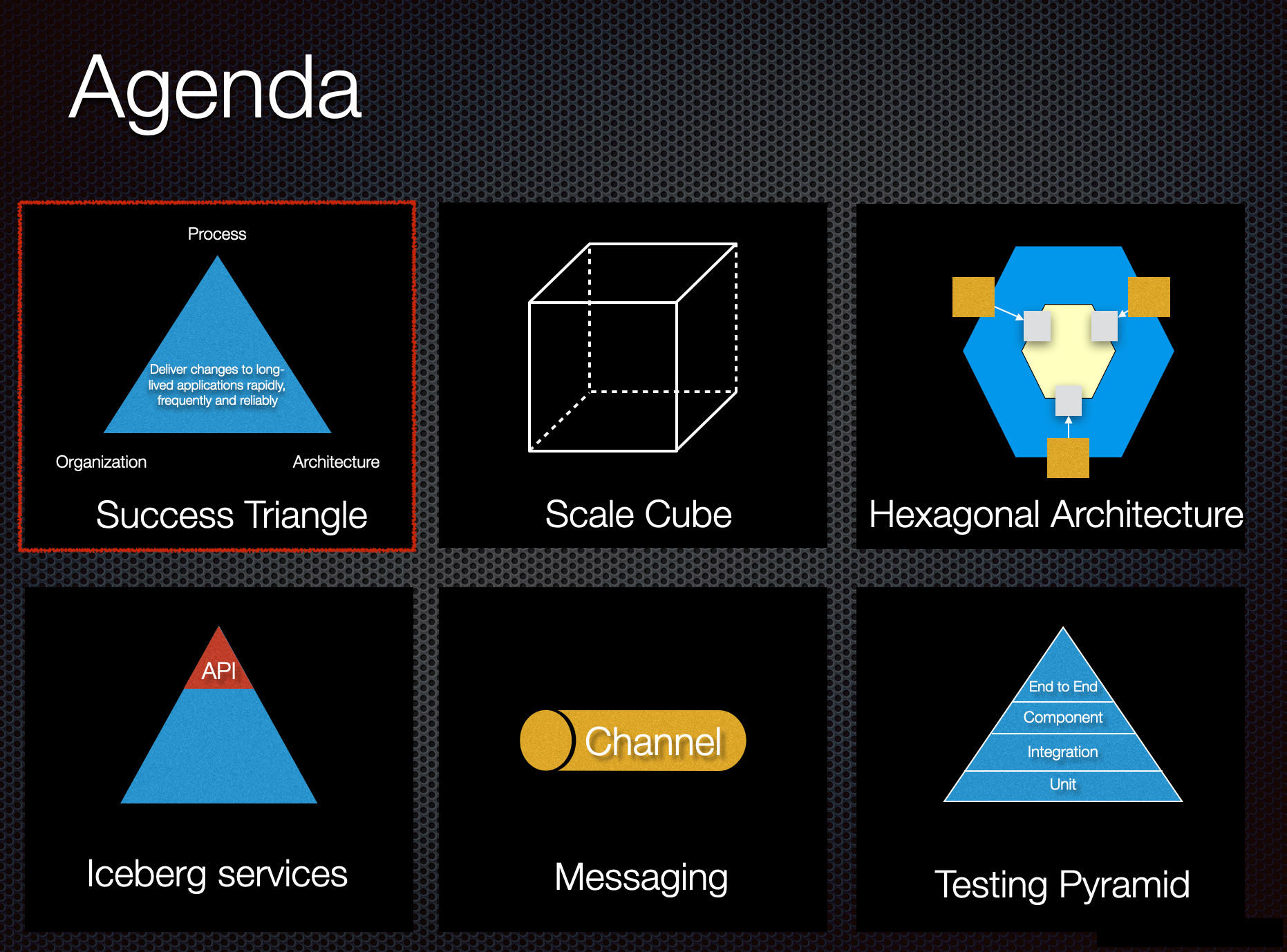
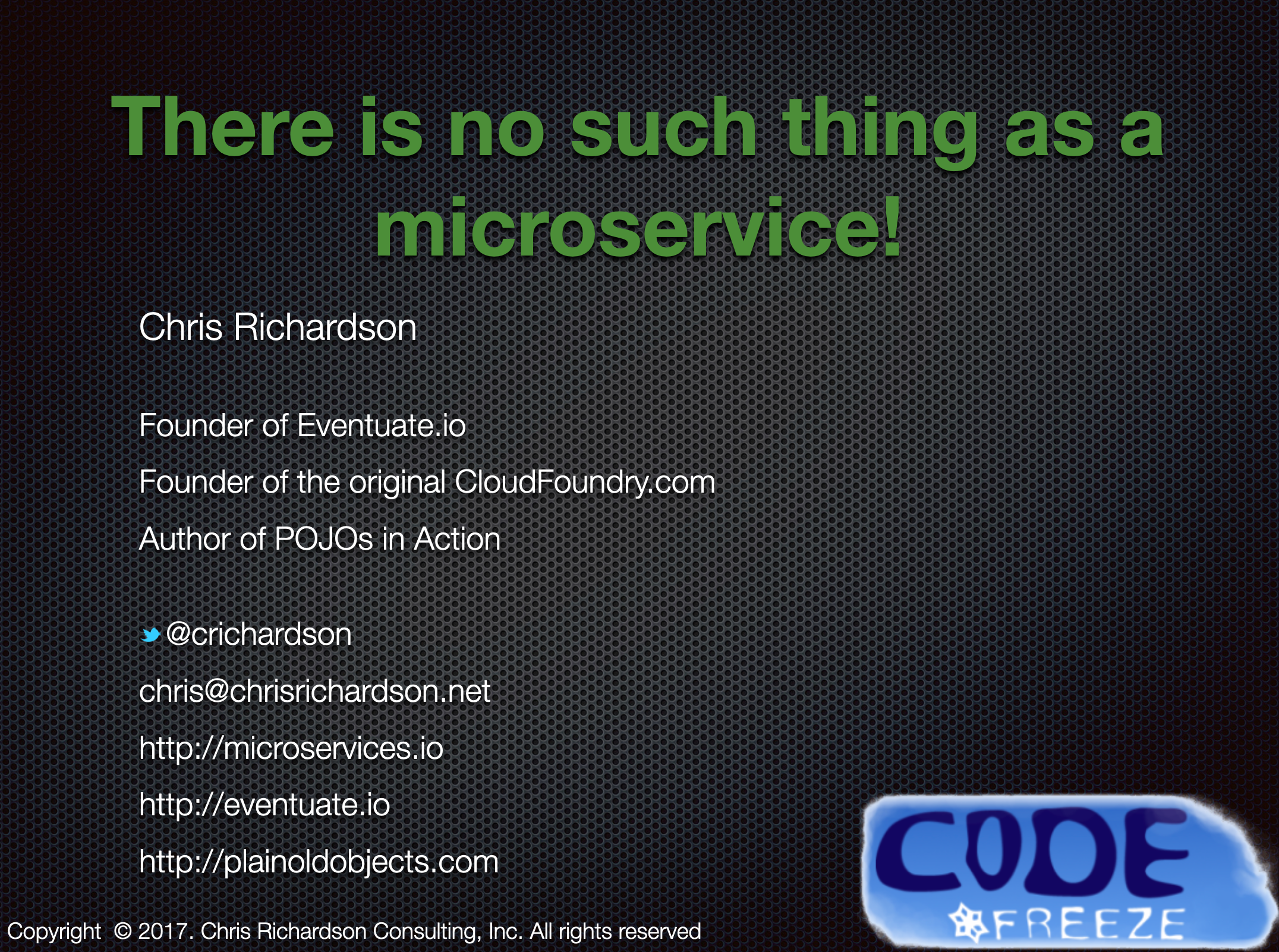
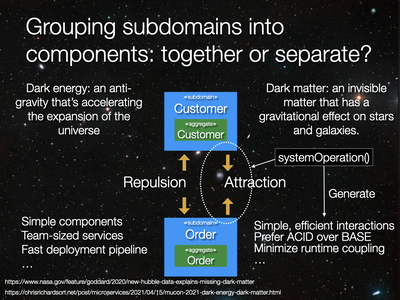

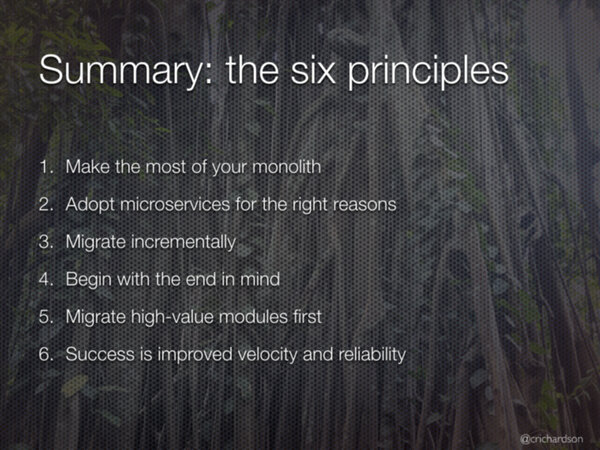
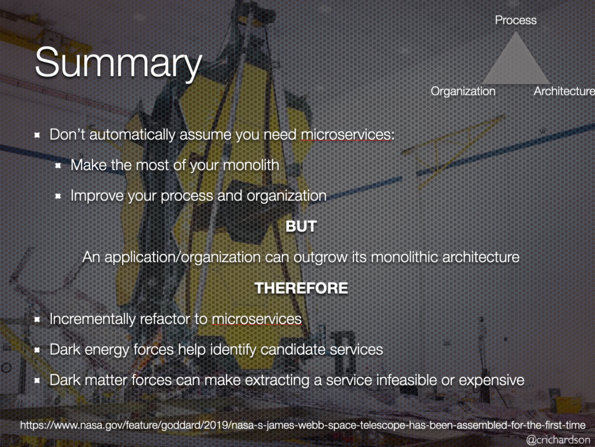


 Premium content now available for paid subscribers at
Premium content now available for paid subscribers at 




